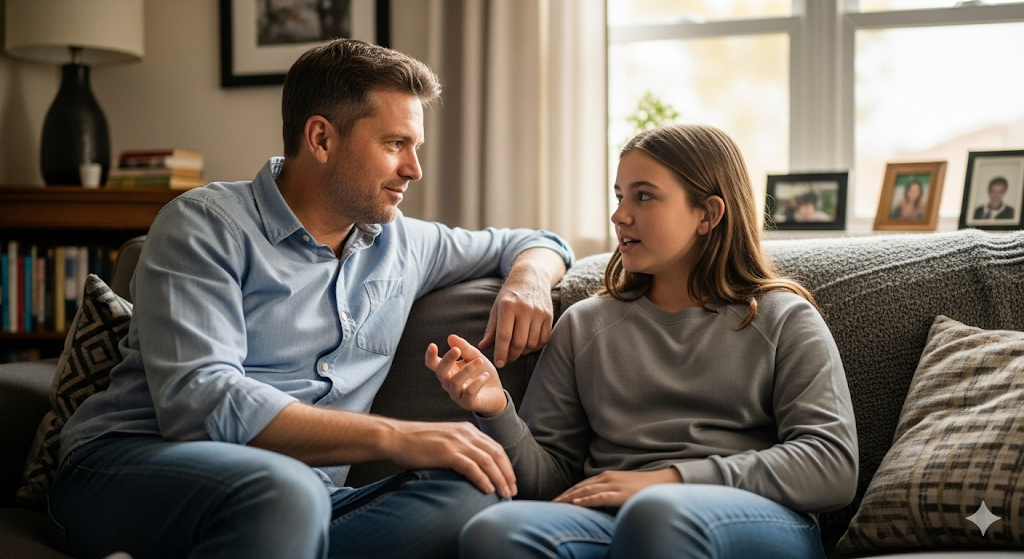Feeling frustrated lately? Whether it’s with family, work, or money, frustration sneaks in when things don’t go the way we expect. It builds tension, clouds our thinking, and can make even calm people snap.
That’s where The LOWER Method comes in.
This 5-step emotional intelligence framework helps you move from reacting to responding with clarity. You’ll learn how to slow down, name what’s really going on, and make better choices in the moment.
What Is The LOWER Method?
The LOWER Method is a practical self-management tool designed to help you lower frustration before it explodes. It stands for:
L – Label
O – Own
W – Wait
E – Explore
R – Resolve
Each step moves you from emotional overload to thoughtful action. The goal isn’t to suppress frustration but to understand and transform it.
Why It Works
Frustration often triggers fight-or-flight reactions. We yell, withdraw, or overthink. The LOWER Method interrupts that spiral by giving your brain structure.
You slow down just enough to create emotional space – and that’s where calm, empathy, and problem solving return.
Psychologists call this meta-awareness: the ability to notice your emotions without being ruled by them. LOWER is your practical way to build that skill every day.
Step 1 – Label: “That’s Frustrating When…”
The first step is to recognize and name the feeling.
Say it out loud or to yourself:
“That’s frustrating when my partner ignores my input.”
“That’s frustrating when I work hard and it goes unnoticed.”
Labeling frustration helps your brain shift from reaction to reflection. It takes the emotion out of the shadows. Once named, frustration becomes a signal – not a storm.
SEO tip in action: This phrasing connects to hundreds of “that’s frustrating when” long-tail searches and positions your article for emotional intelligence topics.
Step 2 – Own: “I Feel Frustrated When…”
Next, take ownership of your emotion.
Instead of blaming others, focus on your internal experience:
“I feel frustrated when deadlines change suddenly.”
“I feel frustrated when money conversations turn tense.”
Owning the feeling builds emotional accountability. It moves you from you-made-me-mad to this-is-how-I-feel.
That subtle shift is where relationships begin to heal and communication opens up.
Step 3 – Wait: Create Space Before Reacting
Frustration tempts us to react instantly – raise our voice, hit send, or walk away.
The Wait step asks you to pause. Breathe. Count to ten. Step outside.
During that short pause, emotional intensity drops, giving your logical brain time to re-engage.
You can literally feel your shoulders loosen and your thoughts sharpen. Waiting isn’t weakness – it’s power under control.
Step 4 – Explore: Get Curious, Not Furious
This step is the heart of emotional intelligence. Ask questions instead of assigning blame.
Try these:
- What’s really bothering me right now?
- Is this about this moment, or something bigger?
- What story am I telling myself?
- What outcome do I actually want?
When you explore, you shift from reactivity to curiosity. Frustration becomes feedback.
This is also where compassion and creativity come alive – both for yourself and others.
For deeper practice, see our related guides:
- Frustration at Work: How to Stay Calm Under Pressure
- Family Conflict: Lower Your Frustration for Effortless Peace
Step 5 – Resolve: Move Toward Calm Action
Resolution doesn’t mean perfection. It means acting with clarity once emotions settle.
Maybe that’s an honest conversation, a boundary, or simply choosing to let go.
When you resolve with intention, you end the frustration loop and reclaim your peace.
You respond instead of react – and that changes everything.
Using The LOWER Method in Real Life
Here’s how LOWER looks in everyday situations:
| Situation | LOWER Example |
| At Work | That’s frustrating when my ideas get ignored. I feel frustrated because I want to be valued. Pause before replying, Ask, Can I clarify my point? Seek resolution calmly. |
| With Family | That’s frustrating when my teenager talks back. I feel frustrated because I want respect. Pause, Explore what’s really going on. Discuss calmly after emotions cool. |
| With Money | That’s frustrating when saving feels impossible. I feel frustrated because progress is slow. Wait before self-criticism. Explore the root cause. Adjust plan or mindset. |
Why The LOWER Method Builds Emotional Strength
Practicing LOWER trains your emotional “muscle memory.” Over time, you’ll notice:
- Shorter emotional recovery times
- Fewer regretful reactions
- Better communication with partners and coworkers
- More empathy for yourself
It’s like mindfulness – but simpler and faster.
It meets you where real life happens: in the car, at the dinner table, or during that tense Zoom call.
LOWER in 30 Seconds (Summary)
- Label – “That’s frustrating when…”
- Own – “I feel frustrated when…”
- Wait – Pause and breathe.
- Explore – Ask what’s really happening.
- Resolve – Take calm, intentional action.
You can practice LOWER anytime, anywhere.
The more you use it, the more natural it becomes.
FAQs About The LOWER Method
Q: Is The LOWER Method therapy?
A: No. It’s a self-awareness technique, not clinical therapy. But many therapists encourage similar approaches to reduce frustration and anxiety.
Q: How long does it take to work?
A: Most people feel calmer after using LOWER even once. With daily practice, emotional recovery becomes almost automatic.
Q: Can I teach LOWER to kids or teams?
A: Absolutely. The 5-step pattern is easy for families, schools, or workplaces. Try introducing it as a “frustration pause” rule.
Q: What makes LOWER different from mindfulness?
A: Mindfulness focuses on observing; LOWER adds structured action – helping you name, pause, and resolve emotions in the moment.
Related Reading on That’s Frustrating
- Frustration in Marriage: Managing Shared Finances Without Fighting
- How to Stay Calm During a Financial Setback
- Workplace Burnout: How to Lower Stress and Reignite Motivation
Closing Thought
Frustration is universal. What matters is how we handle it.
The LOWER Method gives you a repeatable, compassionate framework to transform frustration into understanding.
Each time you Label, Own, Wait, Explore, and Resolve, you choose calm over chaos – clarity over conflict.
So next time you feel that familiar tightness in your chest or jaw, remember:
You can LOWER it.





Leave a Reply